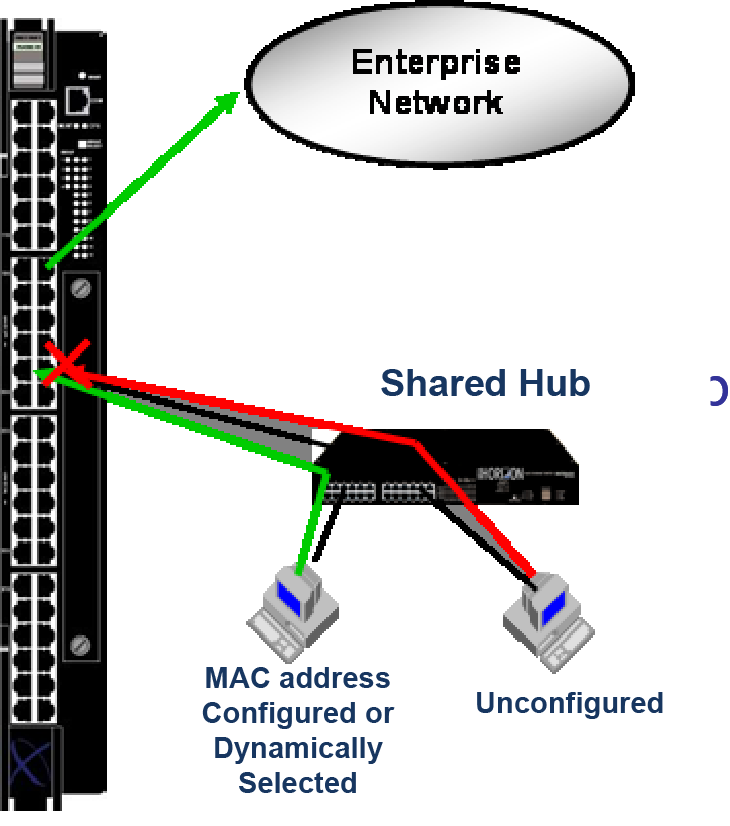MAC Locking, sometimes referred to as MAC-based port locking, port locking, or port security, helps prevent unauthorized access to the network by limiting access based on a device‘s MAC address. MAC locking locks a port to one or more MAC addresses, preventing connection of unauthorized devices via a port. With MAC locking enabled, the only frames forwarded on a MAC locked port are those with the configured or dynamically selected MAC addresses for that port.
There are two different types of MAC locking:
MAC Locking is disabled by default. MAC locking must be both globally enabled and enabled on the desired ports. When globally enabling MAC lock you can optionally specify the port or ports to enable, or enable MAC locking on all ports. Once enabled, ports can be configured for either static or dynamic MAC locking. When configuring static MAC locking, specify the user MAC address and the port string for that user. When configuring dynamic MAC locking, specify the port and the maximum number of users that will be dynamically MAC locked. MAC addresses that are currently dynamically active can be auto reconfigured as static using the set maclock move command for the specified port.
Dynamic MAC lock address aging can be enabled per port. If the Filter DataBase (FDB) entry ages out for this station, the corresponding dynamic MAC locked stations will no longer be MAC locked. The age time for the FDB is set by the set mac agetime command and is displayed using the show mac agetime command. Dynamic MAC lock address aging is disabled by default.
Blocking Unauthorized Access with MAC Locking displays two users on a shared hub connected to an S- K- and 7100-Series switch port. Data from the MAC locked user is forwarded on to the enterprise network. Data from the unconfigured user is dropped.


 Print
this page
Print
this page Email this topic
Email this topic Feedback
Feedback